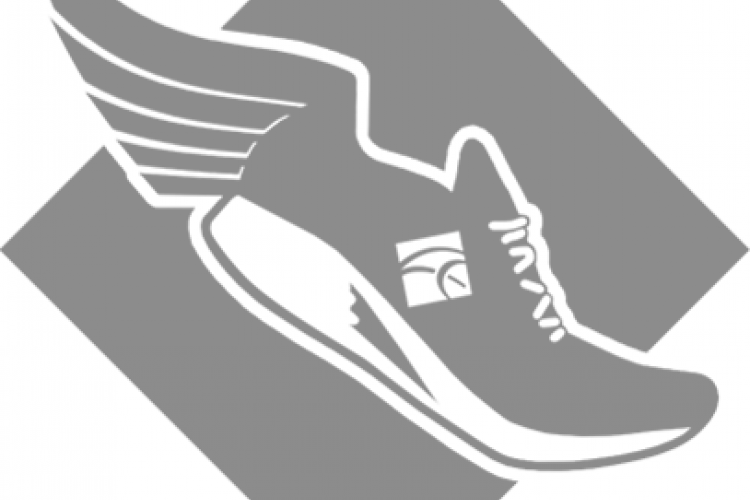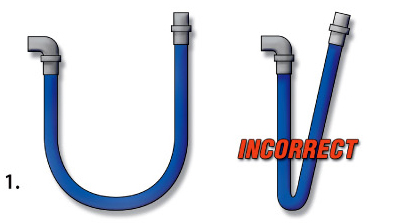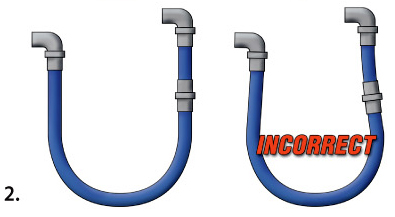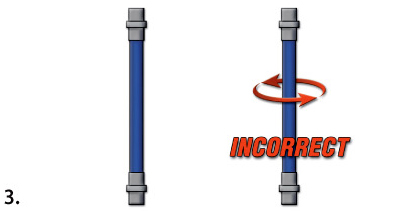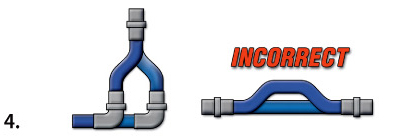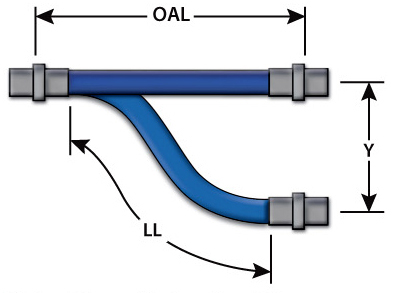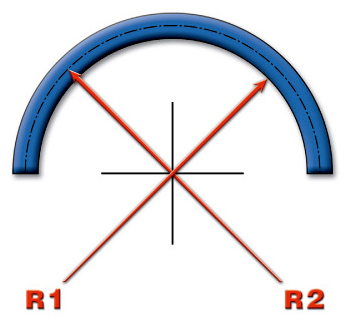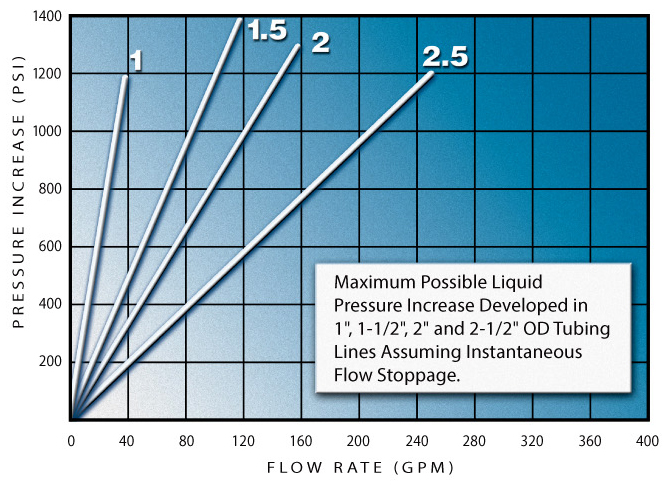Prior to Installation
Inspect hose completely for signs of obvious damage. Possible damage may
include cuts to cover, kinking, broken braids and crushing. This damage can reduce hose life and pressure rating.
Do Not Use any damaged hose.
Hose should be application specific. Review materials, pressures, chemical compatibility, temperature and environment to ensure proper selection of hose.
- Failure of hose will occur when hose is bent (Fig. 1) beyond minimum bend radius. Bend radii are given for individual products and sizes. The bend radius values must be observed (measure to inside radius of fluoropolymer-lined hose and the centerline for stainless steel metal hose) for hoses to be installed properly. Occasionally, vacuum and pressure ratings are based on not to exceed 2% minimum bend radius. The manufacturer should be contacted for specific hose rating and data.
- Restrict hose movement to a single plane (Fig. 2) to minimize resultant twisting or torque. Within the bending plane is where flexing should occur. Stress fatigue increases with excessive bending of hose.
- Axial or twisting movement (Fig. 3) should be eliminated. The likelihood of leakage or failure increases for hoses that are twisted (torqued) during assembly. Floating flanges or swivel-type fittings (i.e., JIC) can eliminateimproper twisting.
- Avoid stretching or compressing the hose (Fig. 4) along its longitudinal axis with in-line installation.
Motion Calculations
Axial Motion:
Motion that occurs when a hose is compressed along its longitudinal axis. Axial motion is only applicable in very short lengths of annular hose only. Fluoropolymer lined hose should not be subjected to axial motion.
Offset Motion:
Motion that occurs when one end of the hose is defected in a plane perpendicular to its longitudinal axis with the ends remaining parallel. In offset applications where motion is repeated, the offset should never exceed 25% of the minimum bend radius. To calculate the required live length to achieve a desired offset, use the following calculations:
LL = √ 6YR + Y2
LL = Hose live length, inches
R = Min. Bend Radius, inches
Y = Offset, inches
OAL = LL + Fittings Length + (2x nominal hose diameter)

